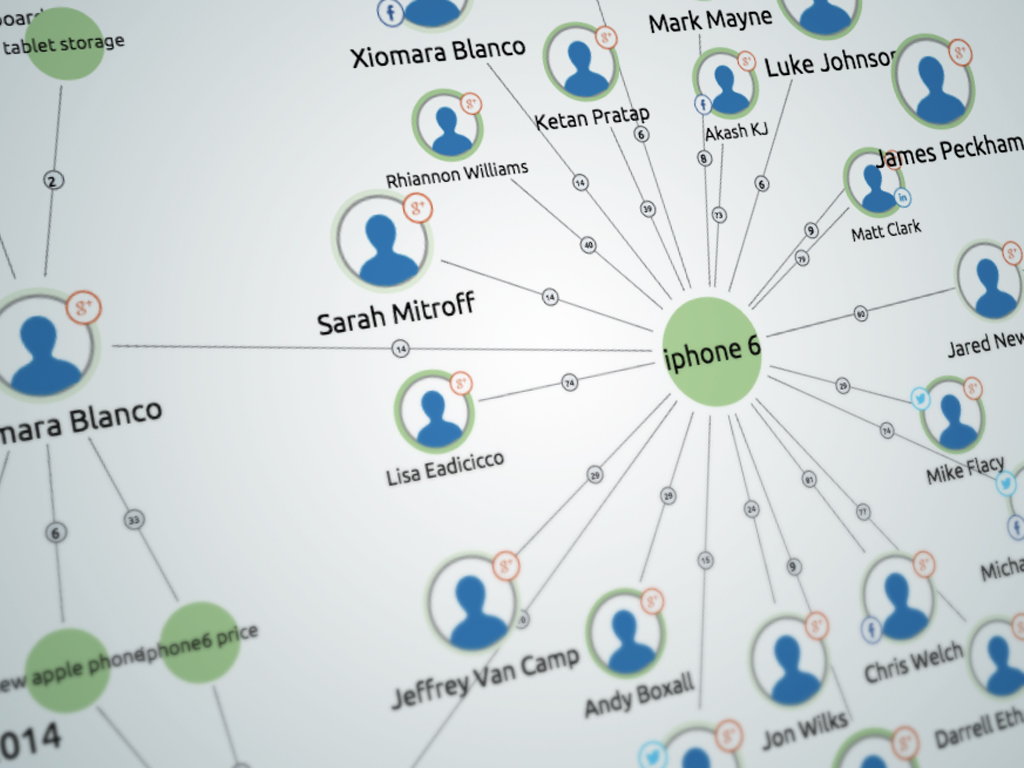Influencer marketing is the new buzzword du jour. It is already showing signs of bandwagon jumping from various quarters. But there is no question that the channels through which influence may be exerted are changing. Understanding the nature of an audience’s influence network is going to be a key task of modern day PR or SEO practitioners. Perhaps a new blended job category will emerge?
Phillip Sheldrake, the author of “The Business of Influence” (2011), probably defined influence best: “You have been influenced when you do something you wouldn’t otherwise have done, or think something you wouldn’t otherwise have thought.”
It seems straightforward enough, but influence is a slippery concept. There are innumerable factors that can play a role in the process of influence – both of the human variety or from outside forces.
Certainly when it comes to influencer marketing, we typically mean the influence of people – on others or on themselves. Thus, influencer marketing tends to be seen as an approach that tries to identify who are the people in a given market or audience that are likely to be impact the wider community – and who have a higher propensity to make people do something they wouldn’t have done otherwise.
So far, so good.
Then: Opinion Leaders
Traditionally, we have looked to “opinion leaders” who influence a wider audience.
This phrase was coined by Elihu Katz and Paul Lazarsfeld back in the ’50s. They posited that mass media information is channeled to the “masses” through opinion leadership. The people with most access to media, and having a more literate understanding of media content, explain and diffuse the content to others.
This has been the basis of PR for many decades. Namely, by seeking to influence the media (i.e., journalists), a PR professional has the most effective means of reaching (and hopefully influencing) opinion formers and their publics.
Now: What Does An Influencer Look Like?
More recently, the idea that influence wasn’t just the domain of the media was given prominence in Malcolm Gladwell’s book, “The Tipping Point”, first published in 2000. This was an attempt to understand how and why certain messages and behaviors spread successfully through an audience. He introduced notions such as connectors, mavens, and salespeople to the language of influence.
He also outlined his “Law Of The Few” – the idea that “The success of any kind of social epidemic is heavily dependent on the involvement of people with a particular and rare set of social gifts.”
In other words, a small number of influential people (relative to the overall size of the audience concerned) were the gatekeepers to the success or failure for a message or product.
However, in 2003, Duncan Watts found that highly connected people were not crucial to success. Via a number of experiments, he cast doubt on Gladwell’s assertion that specific types of people were responsible for bringing about large levels of change. Watts pointed out that if it were as simple as finding the individuals that can disseminate information prior to a marketing campaign, agencies would presumably have a far higher success rate than they do.
Influencer marketing today seems to hold the promise on identifying Gladwell’s few more effectively. Or least, the people who are responsible for influencing an audience as suggested by Watts.
Successful Influence Marketing
But the publication of Nicholas Christakis and James Fowler’s book Connected in 2010 brought some further perspective. One of the key findings in this book was that the structure of a network may be more important than the nodes (human beings) contained within it. According to Christakis and Fowler:
“Whether influential people can exercise influence at all may depend entirely on the precise structure of the network in which they find themselves, something over which they have limited control. As we have seen, some networks permit wide-reaching cascades and others do not.”
Successful influencer marketing, therefore, requires insight both into individuals and their network of relationships within a given audience or community. And recent research from PR firm Edelman suggests that the world’s of PR and search will be drawn ever closer as influence marketing attempts to draw on the skill sets of both camps.
Edelman’s Trust Barometer has for many years highlighted the continuing lack of trust that the population at large has with government, business, and the media. For several years, “people like us” has ranked as the number one source of trust and influence. In this year’s survey, Google’s search results were the second most popular source of trusted information.
The Converging Worlds Of PR & Search
One of the key developments in search from Google recently is the move toward semantic search. This essentially moves us from a web of pages to a web of relationships. Web links should be manifestations of real human relationships.
To that extent, understanding the structure of these networks (or link structures) has major implications for influence marketing. Or more specifically, how influence manifests itself in a specific audience. This is where the worlds of PR and search begin to converge even further by combining an understanding of people and their networks of relationships, as well as how those relationships are translated onto the web – and by default, into how Google perceives the relevance and authority of those relationships in its search results.
Successful influence marketing thus rests on the ability to access, analyze and interpret network structures of both the human and web variety.
The relationships within those networks have far reaching implications for PR and marketing professionals. For example, the dissemination of influence and information may rest more heavily upon the structure of a network than was previously thought possible.
One of the key skills required in search engine optimization today is the ability to identify where nodes of trust and authority exist – and to be able to build relationships with the right individuals behind those sites and pages in order to earn the right to gain a link or reference.
The use of network topology analysis (in this case of the structure of the web) provides a way of planning, researching, and developing more effective influencer marketing strategies for maximizing the impact of a particular message with a particular audience.
Understanding The Complex Network Of Relationships
However, it is worth listening to a further note of caution from Fowler and Christakis:
“Some recent work has clarified the specific circumstances whereby influential individuals are most apt to be able to exercise their influence. It turns out that influential people are not enough: the population must also contain influenceable people and it may be that the speed of diffusion of an innovation (or message) is more dependent on the properties of the latter group than the former. The key point however, is that networks with particular features and topologies are more prone to cascades, that both types of people are required for cascades to take place, and that understanding the shape of the network is crucial to understanding both naturally occurring and artificially induced cascades.”
To echo Phillip Sheldrake, you need people who can influence and be influenced in order for influence of any degree to occur.
There is no question that advances in social and web network dynamics and network topology are providing insights that PR and SEO professionals could only have dreamed of in the past. It points to new ways of better understanding the complex network of relationships that underpin any public or audience.
Those PR and SEO practitioners who have the ability to understand the structure of these networks and the way in which network structures impact on the success or otherwise of influencer marketing must surely be better placed to succeed than those that don’t. The understanding of human relationship and web network structures is thus set to become a core skill of the 21st century PR or SEO practitioner.




